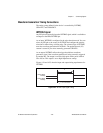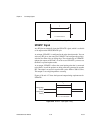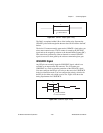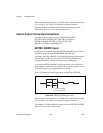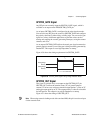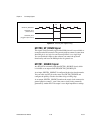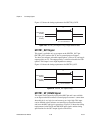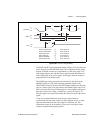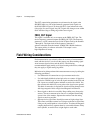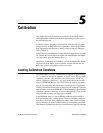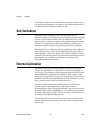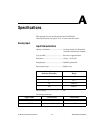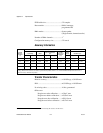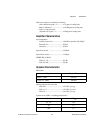
Chapter 4 Connecting Signals
© National Instruments Corporation 4-39 NI 6013/6014 User Manual
Figure 4-35. GPCTR Timing Summary
The GATE and OUT signal transitions shown in Figure 4-35 are referenced
to the rising edge of the SOURCE signal. The assumption for this timing
diagram is that the counters are programmed to count rising edges. The
same timing diagram, but with the source signal inverted and referenced
to the falling edge of the source signal, would apply when the counter is
programmed to count falling edges.
The GATE input timing parameters are referenced to the signal at the
SOURCE input or to one of the internally generated signals on the
NI 6013/6014. Figure 4-35 shows the GATE signal referenced to the rising
edge of a source signal. The gate must be valid (either high or low) for at
least 10 ns before the rising or falling edge of a source signal for the gate to
take effect at that source edge, as shown by t
gsu
and t
gh
in Figure 4-35.
The gate signal is not required to be held after the active edge of the source
signal.
If you use an internal timebase clock, the gate signal cannot be
synchronized with the clock. In this case, gates applied close to a source
edge take effect either on that source edge or on the next one. This
arrangement results in an uncertainty of one source clock period with
respect to unsynchronized gating sources.
t
sc
t
sc
t
sp
t
sp
t
sp
V
IH
V
IL
V
IH
V
IL
V
OH
V
OL
t
gsu
t
gsu
t
gh
t
gh
t
gw
t
gw
t
out
t
out
Source Clock Period
Source Pulse Width
Gate Setup Time
Gate Hold Time
Gate Pulse Width
Output Delay Time
50 ns minimum
23 ns minimum
10 ns minimum
0 ns minimum
10 ns minimum
80 ns maximum
SOURCE
GATE
OUT



